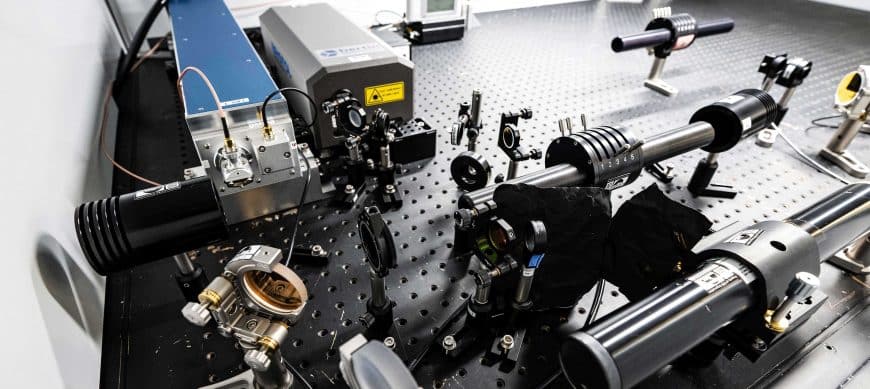Just a year ago, Bertin Technologies delivered to ITER Organization the final design of the Density Interferometer Polarimeter (DIP), a complex optical system for measuring plasma density during nuclear fusion reaction. Since then, our team initiated a vast program of R&D to characterize and evaluate the performance of the dispersion interferometer. Take a closer look at how the project is progressing.
DIP, Density Interferometer Polarimeter, is one of the future diagnostic instruments of ITER reactor, the most ambitious fusion energy project in the world. DIP ‘s main scope will be to control the plasma by measuring the electron density inside the Tokamak. The monitoring of this parameter is a must to manage plasma stability and get an efficient fusion energy.
→ More information about DIP’s functioning
Engaged in Research and Development activities, Bertin Technologies’ main objective was to characterize and evaluate the performances of a dispersion interferometer with an in-house. dedicated test bench. The test bench reproduces the final system at full-scale equipment (1.80 x 1.20 m) including: laser safety interlock, cleanliness, industrial electronic, remote control, high laser power ergonomic management. During characterization tests, Bertin Technologies’ team was able to generate a stable 100mW laser at 4.8mm by injecting a 40W CW laser at 9.6mm in an OpGaAs frequency-doubling crystal: a remarkable performance that demonstrates Bertin Technologies expertise in high-power, non-linear optics.
Utilization and mastering of OPGaAs crystals
The R&D team of Bertin Technologies is one of the few in the world to use OPGaAs frequency-doubling crystal in a high-power regime (40 W, continuously). To conduct its works, Bertin Technologies developed a dedicated support to align, protect and regulate the temperature of the OPGaAs crystal. Controlling these parameters enabled us to obtain quality results which will be necessary to the implementation of DIP in ITER.
A special effort was also required to instrument the laser and control it by precisely measuring its wavelength, temperature, and power. In addition, its teams developed a special beam expander using three mirrors to transport the laser beam to the crystal. Indeed, controlling the geometry of the laser beam as it propagates is a key factor in making it converge on a crystal measuring 3×6 mm and 24 mm long: a new challenge successfully met by Bertin Technologies.
Next projects
After one year’s work, this R&D program has demonstrated the performance of the frequency doubling required for the dispersion interferometer. These results were achieved by controlling the environment and external parameters (temperature, wavelength, computer control, integration, mechanics, etc.).
However, this project does not stop there: the Bertin Technologies teams plan to improve the interferometer’s precision by introducing a frequency modulator into the beam. By oscillating the laser’s frequency, this modulator will significantly eliminate the noise generated by parasitic intensity variations, thereby improving detection accuracy. A modulated double beam will finally be sent to a second OPGaAs crystal to create the interferences needed to measure the phase shift of the two wavelengths. At the same time, Bertin Technologies has painstakingly built a calibrator consisting of two ZnSe glass plates producing a known phase shift simulating the effects induced in the plasma. Characterization of this calibrator, scheduled for 2024, will be a main milestone in assessing the performance of the entire DIP system.
To a prototype for ITER
In addition to these numerous achievements, Bertin Technologies’ teams are preparing to design a full-scale Density Interferometer Polarimeter prototype. This prototype, the first of its kind, will be integrated next to ITER, and will be one of the essential diagnostics for the initial operations of this experimental machine.
The realization of the DIP project embodies the unwavering commitment of our teams to providing the world’s scientific community with pioneering technologies at the cutting edge of innovation, designed to harness the energy of the future: fusion energy.

